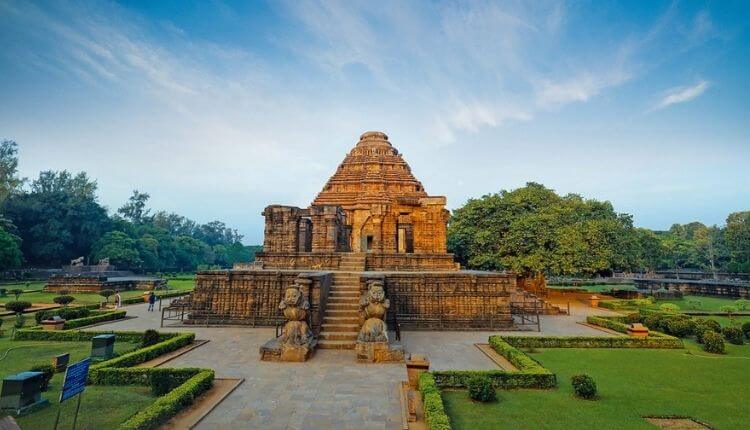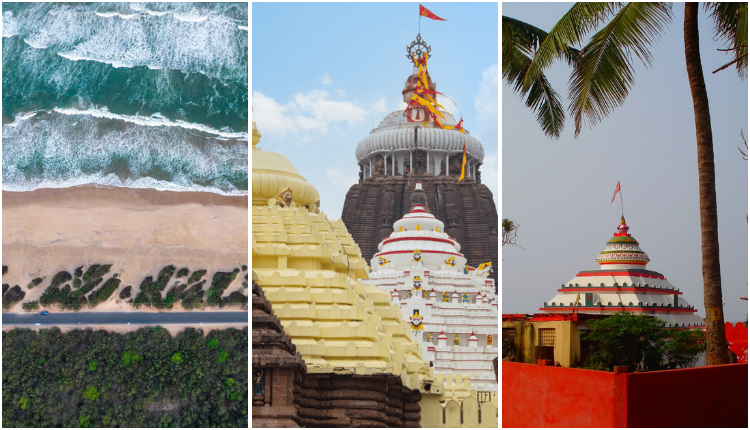Introduction
Konark Sun Temple, one of the most magnificent temples in India, is a UNESCO World Heritage Site located in the Puri district of Odisha. Famous for its breathtaking architecture and intricate stone carvings, this 13th-century temple is dedicated to the Sun God, Surya. The temple is a fine example of Odisha’s ancient Kalinga architecture and is often referred to as the “Black Pagoda” due to its darkened stone appearance.
If you are a history enthusiast, an architecture lover, or a traveler seeking cultural heritage, the Konark Sun Temple is a must-visit destination. In this article, we will explore its rich history, architectural brilliance, and essential travel tips to help you plan your visit.

History of Konark Sun Temple
The Konark Sun Temple was built in the 13th century by King Narasimhadeva I of the Eastern Ganga Dynasty. The construction of the temple took nearly 12 years and involved thousands of skilled artisans. According to historical records, the temple was designed as a grand chariot for the Sun God, symbolizing his journey across the sky.
1. Mythological Significance
- The temple is associated with various Hindu legends. One popular belief is that Lord Krishna’s son, Samba, was cured of leprosy after worshiping the Sun God at this site. As a mark of gratitude, he built the Sun Temple at Konark.
- The temple is also mentioned in ancient Hindu texts like the Puranas, signifying its religious importance.
2. Historical Events and Decline
- The temple flourished during the reign of the Ganga Dynasty but gradually declined due to invasions and natural calamities.
- In the 16th century, the temple was partially destroyed by Muslim invaders, and later, natural disasters like cyclones caused further damage.
- Over time, the main sanctum collapsed, but the temple’s exquisite carvings and architectural remains continue to draw tourists and historians from around the world.
Architectural Brilliance of Konark Sun Temple
The Sun Temple of Konark is a masterpiece of Kalinga architecture, known for its intricate designs, massive structure, and unique symbolism.
1. Chariot-Shaped Structure
- The temple is designed like a colossal chariot of the Sun God, pulled by seven horses and supported by 12 intricately carved wheels.
- Each wheel represents a month of the year, and the spokes act as sundials that can accurately tell time when the sun casts shadows.
- The horses symbolize the seven days of the week, emphasizing the temple’s connection to time and celestial movement.
2. Intricate Carvings and Sculptures
- The outer walls of the temple are adorned with thousands of stone carvings depicting deities, celestial beings, musicians, dancers, and scenes from everyday life.
- The temple also features erotic sculptures similar to those found in the Khajuraho temples, showcasing the artistic freedom of ancient India.
- The craftsmanship in these carvings demonstrates the skills of Odisha’s sculptors and their ability to capture human emotions in stone.
3. The Audience Hall and Other Structures
- Apart from the main chariot-like temple, the complex includes a Natya Mandap (Dance Hall), which was used for religious performances.
- The Mayadevi Temple, located nearby, is believed to be dedicated to one of Surya’s consorts.
- The temple complex also has a deep well and several other small shrines, adding to its historical significance.
Travel Tips for Visiting Konark Sun Temple
To make the most of your trip to the Konark Sun Temple, here are some essential travel tips:
1. Best Time to Visit
- The ideal time to visit Konark Sun Temple is between October and March when the weather is pleasant and comfortable for sightseeing.
- The temple looks particularly mesmerizing during sunrise and sunset, offering breathtaking views.
2. How to Reach Konark
- By Air: The nearest airport is Biju Patnaik International Airport in Bhubaneswar, about 65 km away. From there, you can hire a taxi or take a bus to Konark.
- By Train: The closest railway station is in Puri, approximately 35 km away. Puri is well-connected to major cities in India.
- By Road: Regular bus and cab services are available from Bhubaneswar, Puri, and Cuttack to Konark.
3. Entry Fee and Timings
- Timings: The temple is open from 6:00 AM to 8:00 PM every day.
- Entry Fee:
- Indian visitors: ₹40 per person
- Foreign tourists: ₹600 per person
4. Things to Carry
- Carry a hat, sunglasses, and sunscreen as it can get quite sunny during the day.
- Wear comfortable walking shoes, as you’ll need to walk around the vast temple complex.
- Keep a water bottle to stay hydrated during your visit.
- If you’re interested in learning more about the history, hiring a local guide is recommended.
5. Nearby Attractions
- Chandrabhaga Beach: Just 3 km from the temple, this beautiful beach is perfect for relaxing after your temple visit.
- Puri Jagannath Temple: Located about 35 km away, this famous temple is a major pilgrimage site in Odisha.
- Ramachandi Temple: A serene temple dedicated to Goddess Ramachandi, located near the Kusabhadra River.

Conclusion
The Konark Sun Temple is not just a place of worship but a symbol of India’s rich architectural and cultural heritage. Despite the damage it has suffered over the centuries, the temple’s grandeur remains unmatched. Whether you’re a history buff, an architecture lover, or a spiritual traveler, visiting the Konark Sun Temple is a mesmerizing experience.
Plan your trip wisely with the tips provided above and immerse yourself in the awe-inspiring beauty of this ancient wonder. Have you visited the Konark Sun Temple? Share your experiences with us!






